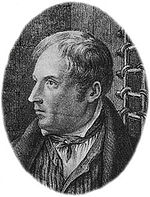
Lasse-Maja
Encyclopedia

Sweden
Sweden , officially the Kingdom of Sweden , is a Nordic country on the Scandinavian Peninsula in Northern Europe. Sweden borders with Norway and Finland and is connected to Denmark by a bridge-tunnel across the Öresund....
criminal who used to disguise himself in women's clothing, which gave him the female sounding nickname Lasse-Maja; Lasse is the common version of his own male name Lars, and Maja was a common version of the female name Maria. His nickname was a way of describing his ambiguous gender as well as the method he used in his criminal career.
Biography
Lasse-Maja quickly became a notorious thief, stealing especially from rich people, his speciality being to dress in women's clothing so as to catch his victims off-guard, sometimes flirting with the men, and to aid his escapes from the crime scenes. The disguise was not used solely for professional reasons; he was also said to have been comfortable in women's clothes.There are many stories about him; he is mentioned in memoirs and diaries, appears as a character in novels and films, and is undoubtedly the most famous transvestite
Transvestism
Transvestism is the practice of cross-dressing, which is wearing clothing traditionally associated with the opposite sex. Transvestite refers to a person who cross-dresses; however, the word often has additional connotations. -History:Although the word transvestism was coined as late as the 1910s,...
in Swedish history - he became almost an icon, and is much romanticised.
He was caught in 1813 after having stolen silver from the church in Järfälla and sentenced to life imprisonment in the fort of Karlsten in Marstrand
Marstrand
Marstrand is a seaside locality situated in Kungälv Municipality, Västra Götaland County, Sweden. It had 1,432 inhabitants in 2005. It has held city privileges since 1200. The most striking feature about Marstrand is the 17th century fortress Carlsten, named after King Carl X Gustav of Sweden. The...
, but he behaved in an exemplary manner as a prisoner and soon his time in jail became quite comfortable; he became a tourist attraction for the upper-classes, who visited Marstrand for relaxation during the summer season, and became a social success. One of these visitors was the crown-prince, the future king Carl XIV of Sweden
Charles XIV John of Sweden
Charles XIV & III John, also Carl John, Swedish and Norwegian: Karl Johan was King of Sweden and King of Norway from 1818 until his death...
, who had him pardoned and released in 1839.
Lasse-Maja spent the rest of his life touring the country, talking about his exciting life. He is said to have claimed that life was very hard, but that the most important thing was to have fun.

